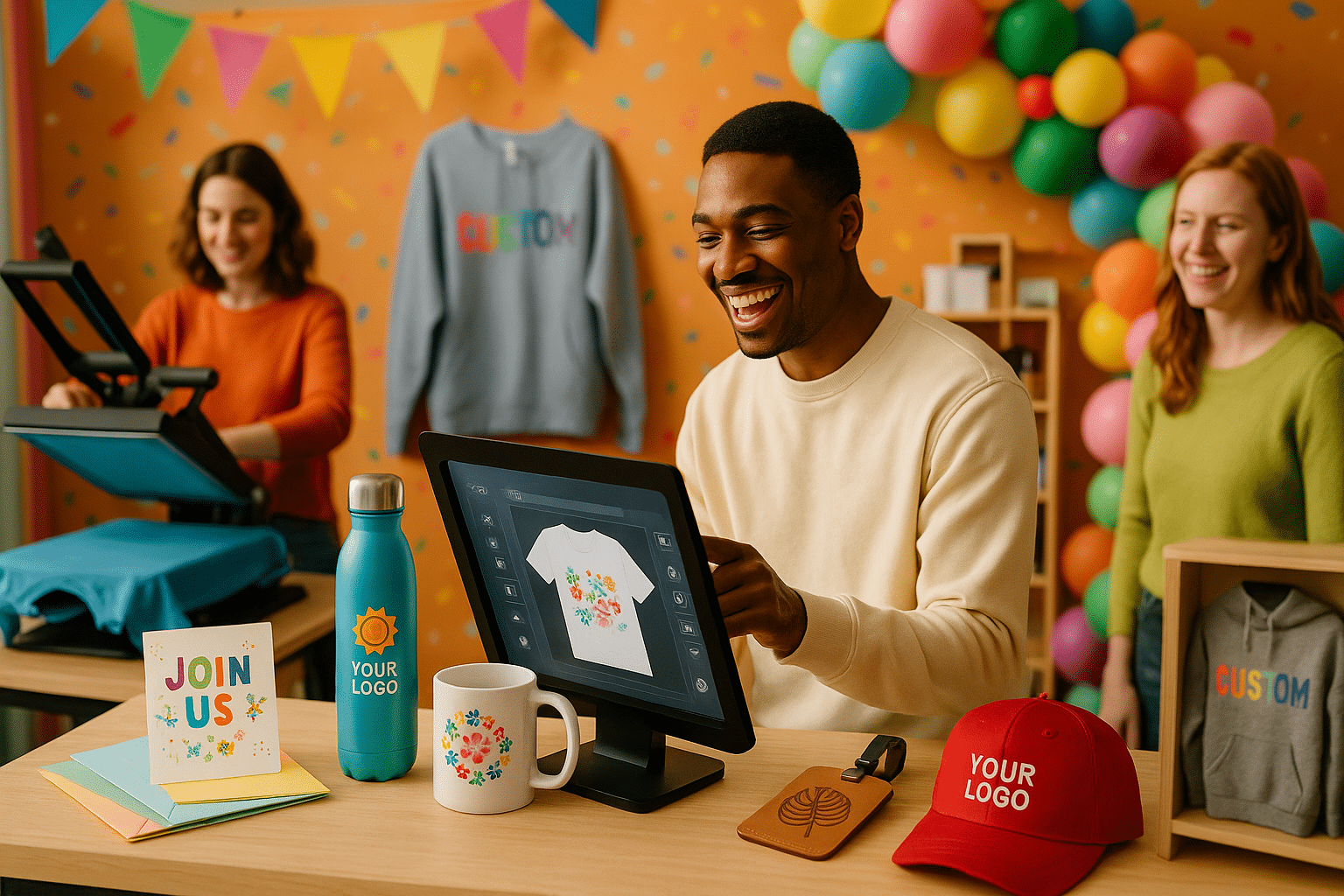Elevate Your Event Planning with Interactive Trends and DIY Inspiration
Elevate Your Event Planning with Interactive Trends and DIY Inspiration

Event planning is an art that combines creativity and meticulous organization. In this blog, we explore interactive trends, DIY inspiration, and essential marketing strategies that can elevate any event. From unique thermal bottles to engaging photo booths, discover how to enhance your event experience while ensuring it resonates with your audience.
Harnessing Interactive Trends for Memorable Events
Embracing DIY elements in event planning can transform an ordinary gathering into an extraordinary experience. By incorporating personal touches, you not only create a unique atmosphere but also engage your attendees on a deeper level. Here are key benefits and creative ideas for integrating DIY into your events:
- Benefits of DIY Elements in Events
- Cost-Effective: DIY projects can significantly reduce event costs while allowing for customization.
- Unique Touch: Personalized decorations and favors stand out and create lasting memories for your guests.
- Participant Engagement: Inviting attendees to contribute to the DIY process fosters a sense of belonging and investment in the event.
- Branding Opportunities: Customized items, such as thermal bottles, mugs, and caps, can enhance brand visibility when designed creatively.
- Ideas for DIY Projects
- Customized Luggage Tags: Create unique luggage tags for guests that they can take home. Use cardstock to print their names and designs related to your event’s theme.
- Personalized Decorations: Engage in painting, stamping, or using vinyl decals to personalize table centerpieces or banners that reflect your brand identity.
- Photo Booth Backdrops: Design and craft striking backdrops using fabric or paper to serve as the perfect setting for fun photo ops.
- Interactive Stations: Set up DIY stations where guests can create their own souvenirs like custom mugs or laser-engraved items, enhancing their interaction with your brand.
- Incorporating Audience Skills in DIY
- Workshops: Host workshops where attendees can learn to make something related to your event, which adds value and encourages networking.
- Team Challenges: Create team-based DIY challenges to foster camaraderie among participants while crafting decor or event-related items.
- Feedback Loops: Allow attendees to provide input on DIY projects, enabling them to feel like co-creators of the event.
DIY elements not only enrich the event experience but also strengthen branding efforts. Whether it’s through personalized giveaways or unique event decor, integrating DIY can elevate your event into a captivating celebration that resonates with attendees long after the day concludes, making them more likely to share their experiences and stories.
DIY Inspiration to Make Your Event Stand Out
Delve into the fascinating world of DIY in event planning. Personal touches can elevate an event, making it more memorable and unique. By creating DIY elements, you not only add creativity but also engage your guests on a deeper level. Here are some key benefits and ideas for incorporating DIY projects into your events:
- Benefits of DIY elements in events:
- Cost-effective: Create stunning visuals and fun items without breaking the bank.
- Personalization: Design custom pieces that resonate with your brand, theme, and audience.
- Guest Engagement: Foster interaction by involving attendees in certain DIY activities, enhancing their experience.
- Ideas for DIY projects:
- Personalized decorations: Use cardstock to create banners, centerpieces, or table settings tailored to your theme.
- Custom favors: Craft unique luggage tags or thermal bottle labels that guests can take home, serving as lasting reminders of your event.
- Creative photo wall: Set up a DIY photo booth area with themed backdrops made from recycled materials, encouraging playful interactions.
- Unique signage: Utilize laser-engraved products to display meaningful quotes or directional signage that aligns with your event’s vibe.
- How to incorporate audience skills in DIY:
- Workshops: Host pre-event workshops where guests can help create decorations or favors, doubling as team-building activities.
- Interactive Q&A: Before the event, engage your audience through polls to decide on which DIY elements they would like to see, such as choosing color schemes or favor options.
- Feedback sessions: Post-event, request input on the DIY elements used, potentially inspiring future enhancements or changes.
Moreover, DIY can seamlessly align with your branding efforts. When guests encounter these personalized elements, they gain a stronger connection with the brand. Items like custom mugs or hoodies featuring your logo create not only a functional takeaway but also a visual representation of your brand. The tangible memories that your DIY projects create will contribute to a narrative that resonates well beyond a single event. Embracing DIY approaches can transform your event, making it not just a moment in time but a memorable experience that your audience will cherish for years to come.
Strategizing Your Marketing and Branding Approach
To ensure your event makes a lasting impression, formulating a cohesive marketing and branding approach is essential. This not only builds anticipation but also enhances the event’s visibility and overall success. Here are some effective strategies to create a buzz before your event:
- Importance of Event Branding: A consistent branding strategy is vital in setting your event apart from others. Your brand should reflect the event’s theme, mission, and unique offerings. Consider how your logo, color scheme, and typography can resonate with your target audience.
- Methods to Effectively Market Your Event:
- Social Media Campaigns: Utilize platforms like Instagram, Facebook, and Twitter to share engaging content, countdowns, and behind-the-scenes snippets. Encourage attendees to share their experiences with hashtags that align with your event.
- Influencer Partnerships: Collaborate with local influencers whose followers match your target demographics. Their endorsements can amplify your reach. Providing them with unique merchandise items, like thermal bottles or mugs, can create excitement and encourage engagement.
- Traditional Advertising: Don’t overlook conventional methods such as flyers, posters, and local radio promotions. Pair these with a creative tagline that encapsulates your event and evokes curiosity.
- Creating Memorable Taglines and Concepts: A clever tagline can be the cornerstone of your marketing campaign. Ensure it’s catchy, memorable, and communicates the essence of the event. Use it across all channels, from email marketing to merchandise like hoodies and caps, to reinforce recognition.
Maintaining consistent branding across all platforms—whether it’s your website, social media, or physical products—strengthens recognition and engagement. When potential attendees recognize your branding, they are more likely to engage and attend the event. Moreover, incorporating interactive elements, such as a photo booth, can heighten engagement during the event itself. Camp on phrases such as ‘hire photo booth’ and ‘photo booth cost’ in your marketing material to optimize for search engines. Also, think about integrating opportunities for DIY inspiration to enhance involvement; providing participants with tools to create their own souvenirs, like laser-engraved items, can add unique personal touches to your event.
By strategically blending effective marketing and branding approaches, your event can stand out, driving attendance and creating memorable experiences that resonate with your audience long after the last guest departs.
Behind the Scenes: Insights from Successful Events
Successful event planning requires meticulous attention to detail, hard-learned lessons, and a strong grasp of logistical essentials. By taking readers behind the scenes, we can uncover the nuances that separate a good event from a remarkable one. Here are some key insights from experienced event planners focusing on logistical challenges and creative problem-solving methods.
- Key logistical steps in planning:
- Define objectives: Start by clearly identifying the event’s purpose — be it networking, education, or entertainment.
- Budgeting: Properly estimate and allocate resources, keeping potential costs such as hiring a photo booth, venue fees, and marketing expenses in mind.
- Venue selection: Choose a location that aligns with the event theme and accommodates the expected number of attendees.
- Vendor management: From catering to technology, ensure you have reliable vendors who understand the vision of the event.
- Logistics management: Detail transportation plans, registration processes, and on-site coordination. Consider elements like thermal bottles or luggage tags for personalization.
- Case studies of successful events:
- Tech Conference 2022: A successful event with over 500 participants. Behind the scenes, planners emphasized the importance of interactivity. They hired a photo booth that provided instant digital sharing, leading to incredible social media buzz.
- Charity Gala: An elegant affair that incorporated DIY elements like custom mugs and laser-engraved awards, which kept costs manageable while enhancing attendee engagement.
- Outdoor Music Festival: Focused on creating a community atmosphere. Feedback indicated attendees loved interactive booths and the eco-friendly swag (caps, hoodies) provided.
- Feedback loops from attendees:
- Surveys: Gather post-event feedback via surveys that evaluate every detail to improve future engagements.
- Social media monitoring: Analyze comments and shares related to the event to understand audience sentiment and identify popular features.
- Engagement metrics: Track participation rates in activities, especially those involving photo booths, as effective indicators of engagement.
Each of these insights contributes to the overall success of an event. Aspiring planners should take note of these logistical steps, case studies, and effective feedback loops to enhance their own event planning endeavors.
Inspiring Event Success Stories
Inspiring event success stories often serve as the bedrock of innovative planning, providing both aspiration and tangible strategies for upcoming event creators. Observing real-life examples allows planners to not only identify unique themes and concepts but also to understand how community and audience engagement can elevate an event beyond expectations.
- Profiles of Successful Events: Consider an annual charity gala that transformed its image and audience reach. By incorporating an interactive element, like a custom photo booth, attendees were engaged more than ever. The booth provided high-quality images that guests could instantly share on social media, broadening the gala’s visibility and attracting attention from potential sponsors for subsequent years. The incorporation of branded items, such as custom mugs featuring event details and partner logos, also helped create lasting memories and build brand presence.
- Unique Themes and Concepts That Stood Out: A tech conference decided to break away from traditional formats. The theme revolved around sustainability, with all materials sourced from eco-friendly suppliers. This thoughtful integration appealed to the audience’s values, fostering a deeper connection. The event featured interactive sessions where attendees could learn to create DIY items, like plantable business cards made from cardstock, nurturing innovative thinking while building community spirit. The well-received idea of a “green photo booth”—surrounded by living plants—allowed attendees to capture memories while reinforcing the event’s core message.
- The Role of Community and Audience Engagement in Success: One memorable food festival showcased local cuisine through interactive cooking sessions. Attendees participated in hands-on workshops, learning from local chefs. This aspect not only enriched the experience but also emphasized the festival’s commitment to showcasing local talent. By leaving room for attendees to provide feedback through a post-event survey, the organizers actively involved the community in shaping future events, demonstrating the importance of listening and adapting.
These inspiring stories encourage event planners to think creatively about engagement strategies and themes that resonate with their audience. Each success offers key insights that encompass branding opportunities, exciting interactive trends, and marketing potential. By integrating unique elements like specialized photo booths or branded merchandise, planners can elevate their events and leave lasting impressions. Embrace these ideas as you embark on planning your next extraordinary gathering.
Conclusions
Planning a successful event requires a blend of creativity and strategic marketing. By incorporating interactive trends, DIY elements, and effective branding strategies, you can create memorable experiences that engage attendees. Remember, the right tools, like photo booths and personalized merchandise, can make all the difference in creating lasting memories.




